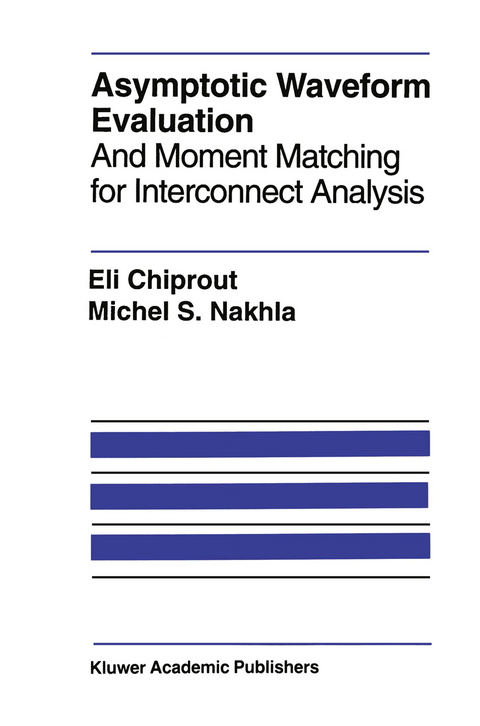
Asymptotic Waveform Evaluation
Springer (Verlag)
978-0-7923-9413-6 (ISBN)
1 Introduction.- 1.1 Motivation.- 1.2 Overview.- 1.3 Notation.- 2 Asymptotic Waveform Evaluation.- 2.1 State space formulation.- 2.2 Generating an approximate response.- 2.3 MNA formulation.- 2.4 Examples.- 3 Transmission Lines.- 3.1 Linear subnetwork formulation.- 3.2 Moments of distributed networks.- 3.3 Uniform lossy coupled transmission lines.- 3.4 Nonuniform transmission lines.- 3.5 Miscellaneous combinations.- 4 Padé Approximations.- 4.1 The rational approximation.- 4.2 Accuracy.- 4.3 Laurent expansion about o0.- 5 Accuracy Improvements.- 5.1 Higher precision programming.- 5.2 Moment scaling.- 5.3 Padæ table analysis.- 5.4 Optimal pole selection.- 5.5 Partitioning.- 5.6 Method of characteristics.- 5.7 Frequency shifting.- 6 Complex Frequency Hopping.- 6.1 Complex expansions.- 6.2 Pole convergence.- 6.3 Pole selection.- 6.4 Search strategy.- 6.5 Extra CPU requirements.- 7 Nonlinear Analysis.- 7.1 Notation.- 7.2 Differential equations (SPICE) approach.- 7.3 Recursive convolution approach.- 8 Sensitivity Analysis.- 8.1 Pole and zero sensitivity.- 8.2 Coefficient sensitivity.- 8.3 Moment sensitivity: lumped elements.- 8.4 Moment sensitivity: distributed elements.- 8.5 Sensitivity of multi-conductor transmission line stamp.- 9 Other Applications.- 9.1 PEEC simulation.- 9.2 3-D RC mesh analysis.- 9.3 Symbolic analysis.- A Appendix.- A.1 Transmission line equations.
| Erscheint lt. Verlag | 30.11.1993 |
|---|---|
| Reihe/Serie | The Springer International Series in Engineering and Computer Science ; 252 |
| Zusatzinfo | XVII, 197 p. |
| Verlagsort | Dordrecht |
| Sprache | englisch |
| Maße | 155 x 235 mm |
| Themenwelt | Informatik ► Weitere Themen ► CAD-Programme |
| Technik ► Elektrotechnik / Energietechnik | |
| ISBN-10 | 0-7923-9413-5 / 0792394135 |
| ISBN-13 | 978-0-7923-9413-6 / 9780792394136 |
| Zustand | Neuware |
| Haben Sie eine Frage zum Produkt? |
aus dem Bereich


